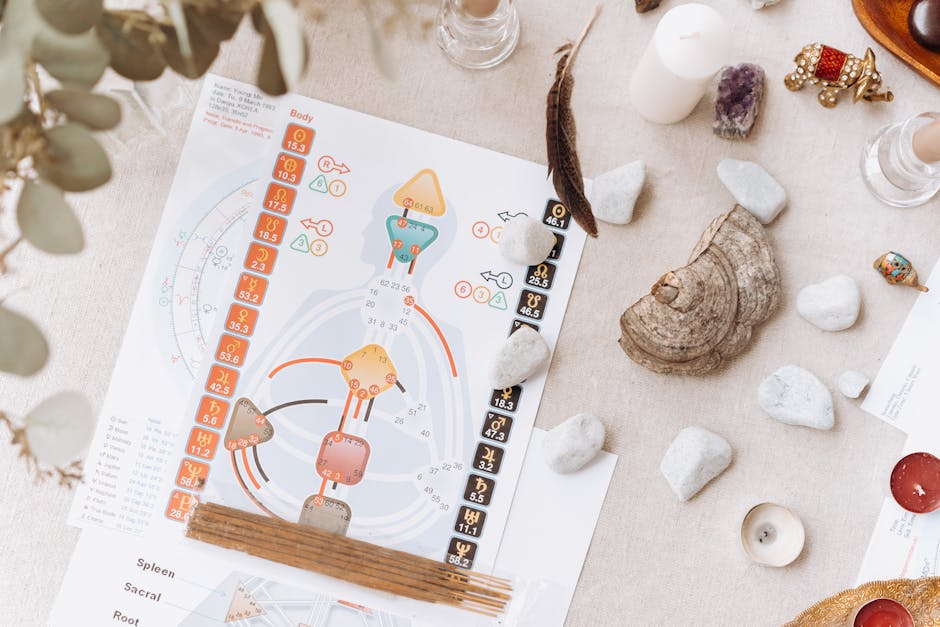Do you see people who manifest their goals easily?
Meanwhile, others seem to face one challenge after another.
The secret might lie in the power of manifestation visualization – a transformative practice that’s more than just daydreaming.
In this comprehensive guide, we’ll explore how this powerful technique can revolutionize your goal-setting and achievement process, backed by science and real-world success stories.
Table of Contents
Introduction: The Power of Mental Imagery
When Olympic gymnast Simone Biles prepares for a competition, she doesn’t just physically practice – she mentally rehearses every flip, twist, and landing.
This isn’t just a quirky pre-performance ritual.
According to research from Harvard Medical School, visualizing can significantly improve both physical performance and cognitive abilities.
What is Manifestation Visualization?
Manifestation visualization is the practice of creating detailed mental scenarios of your desired outcomes. But it goes beyond just seeing pictures in your mind.
Key Components of Visualization:
- Mental Scenarios: Creating vivid mental scenarios
- Emotional Engagement: Feeling the emotions of achievement
- Sensory Involvement: Engaging all five senses
- Subconscious Programming: Aligning your deeper mind with your goals
Types of Visualization
| Type | Description | Best Used For |
| Outcome Visualization | Focusing on the end result | Long-term goals |
| Process Visualization | Mentally rehearsing the steps | Skill development |
| Identity Visualization | Embodying your future self | Personal growth |
Related Topics:
- How to Practice The Law of Attraction
- How to apply the Law of Assumption
- Manifesting Financial Abundance
The Science Behind Visualization
Let’s dive deeper into the fascinating neuroscience of visualization. The Journal of Neurophysiology published groundbreaking research showing that mental practice produces similar neural effects as physical practice.
Here’s what happens in your brain when you visualize:
- Neural Activation: Similar brain regions activate during while visualizing and actual experience
- Neuroplasticity: Regular visualizing creates new neural pathways
- Reticular Activating System (RAS): Your brain becomes primed to notice opportunities
The Visualization-Reality Connection
Think of your brain as a GPS system.
When you input a destination (what you visualize), your mind starts creating opportunities, solutions, synchronicities and motivates you to take aligned actions to your goals.
When you visualize something, your subconscious mind can’t tell the difference between what’s actually happening and what you’re imagining.
It believes the visualization is real.
Since our subconscious beliefs shape our reality, whatever we visualize—if done correctly—can eventually manifest into reality.
The Psychology Behind Visualization
The power of visualization is deeply rooted in cognitive behavioral therapy (CBT) and neuroscience.
According to the American Psychological Association, visualization techniques can rewire neural pathways and create lasting behavioral change.
The Benefits of Manifestation Visualization
Manifestation visualization is a transformative practice that harnesses the power of the mind to bring desired goals into reality. Here are a few key benefits:
- Clarity and Focus: Visualization helps to clarify what you truly want by painting a vivid mental picture of your goals.This increased clarity creates a focused mindset, making it easier to identify the actions needed to achieve those desires.
- Enhanced Motivation: By regularly visualizing your success, you create a sense of excitement and anticipation. This boosts motivation and reinforces your commitment to taking the necessary steps toward your goals.
- Positive Mindset Shift: Manifestation visualization trains the mind to focus on positive outcomes rather than obstacles. This shift in perspective helps build resilience and cultivates a mindset that attracts opportunities and success.
- Alignment with Intentions: The more you visualize your goals, the more your subconscious mind aligns with those intentions. This creates a powerful inner drive that guides your decisions and actions, making it easier to manifest what you desire.
- Stress Reduction: Visualization can also act as a relaxation tool, reducing anxiety and promoting calmness. By mentally rehearsing positive scenarios, you reduce the stress associated with uncertainty and create a sense of peace around your goals.
The Complete Visualization Process: A Step-by-Step Guide
Preparation Phase: Setting the Foundation

Before diving into visualization, proper preparation is crucial. According to neuroscience research, a prepared mind creates stronger neural pathways during visualization.
1. Creating the Optimal Environment
| Environmental Factor | Purpose | Examples |
| Lighting | Set mood | Soft, natural light |
| Sound | Minimize distractions | White noise, nature sounds, Alpha sounds |
| Temperature | Physical comfort | 68-72°F (20-22°C) |
| Seating | Body support | Meditation cushion, comfortable chair |
2. Mental State Preparation
- Breathing Exercise
- Inhale for 4 counts
- Hold for 4 counts
- Exhale for 4 counts
- Repeat 4 times
- Mind Clearing
- Release tension from body
- Let go of daily concerns
- Focus on present moment
Pro tip: You can also listen to the calming Alpha frequency sounds before you visualize.
The Core Visualization Process
Step 1: Goal Clarity

Before visualizing, define your goal using the SMART framework:
Criterion: Specific
- Question to Ask: What exactly do I want?
- Example: “A beachfront home in Malibu”
Criterion: Measurable
- Question to Ask: How will I know I achieved it?
- Example: “3 bedrooms, 2000 sq ft”
Criterion: Achievable
- Question to Ask: Is this realistically possible?
- Example: “Within my earning potential”
Criterion: Relevant
- Question to Ask: Does this align with my values?
- Example: “Supports desired lifestyle”
Criterion: Time-bound
- Question to Ask: When do I want this by?
- Example: “Within 5 years”
After gaining clarity, you can start visualizing your goals and desired outcomes.
Step 2: Sensory Engagement
While visualizing, engage each sense systematically:
- Visual Details
- Colors and shapes
- Lighting and shadows
- Movement and patterns
- Auditory Elements
- Natural sounds
- Voices or conversations
- Music or ambient noise
- Physical Sensations
- Temperature
- Textures
- Body positioning
- Scents and Tastes
- Related aromas
- Specific flavors
- Environmental smells
- Emotional Experience (This is very important!)
- Joy and excitement
- Peace and satisfaction
- Pride and accomplishment
- Gratitude for the outcome
Pro Tip: Record your visualizing process as a guided meditation for daily replay.
Advanced Visualization Guidelines
1. First-Person Perspective
According to sports psychology research, visualizing in first-person is most effective:
- See through your own eyes
- Feel in your own body
- Experience directly, not as an observer
2. Timeline Integration
Create a complete timeline of your visualizing process:
Present Moment
↓
Intermediate Steps (Process)
↓
Achievement Point
↓
Future Impact
Effective Visualization Techniques

1. The Vision Board Approach
A vision board is a visual representation of your dreams and goals, it is designed to inspire and motivate you into achieving them.
Vision boards have evolved beyond simple cork boards. According to Psychology Today, digital vision boards can be equally effective. Here are modern approaches:
Digital Vision Board Platforms:
- Canva
- PicMonkey
- Instagram Collections
Traditional Vision Board Materials:
- Magazines
- Personal photos
- Art supplies
- Inspirational quotes
Learn how to create a vision board here
2. Using Guided Visualizations
Guided visualizations are a powerful tool with the help of apps or recorded sessions.
These guided practices provide structure and support to your visualizing sessions.
Additionally, these sessions are often tailored to specific needs—be it personal growth, healing, or achieving success—which makes them particularly effective for those who are just beginning to explore the benefits of visualization.
3. Writing a Visualization Script
The key to writing an effective script lies in vivid, detailed descriptions of the desired outcomes.
When constructing a visualization, you should focus on creating a sensory-rich narrative.
Sample Script:
“In front of you, there’s a desk that’s neatly arranged and visually appealing.
You can see your name on a plaque beside the computer.
As you sit down, you feel a rush of pride and excitement.
You’ve worked hard to get here, and everything is falling into place.
Your phone rings, and as you pick it up, you hear the voice of a colleague congratulating you on the successful completion of a major project.
You smile, feeling a deep sense of satisfaction.”
Using Affirmations Alongside Visualization

The Power of Combined Practice
Research from the Journal of Personality and Social Psychology suggests that affirmations combined with visualizing can:
- Increase goal achievement by 25%
- Reduce stress levels by 40%
- Enhance self-confidence by 35%
Creating Effective Affirmations
| Type | Example | Best Used For |
| Present Tense | “I am successful in my online business while helping people” | Goal setting |
| Gratitude Based | “I’m thankful for my passionate job” | Abundance mindset |
| Identity Based | “I am confident with my skills” | Personal growth |
Learn more about Manifestation Affirmations here
Common Challenges and Solutions
Challenge 1: Lack of Clarity
Solution: Use the Clarity Scale
| Clarity Level | Description | Action Step |
| 1-3 | Vague idea | List specific outcomes |
| 4-7 | General concept | Create detailed scenarios |
| 8-10 | Crystal clear | Fine-tune and enhance |
If your visualization feels vague, list specific outcomes to make it clearer.
For general concepts, add more detail to what you see in your mind.
If your vision is already crystal clear, refine and enhance it further.
Clarity is key when visualizing your desires.
Challenge 2: Inconsistency
Solution: The 21/90 Rule
- Practice for 21 days to form a habit
- Practice for 90 days in order to make it part of your routine
Challenge 3: Disbelief
Solution: Evidence Building
- Start with small, achievable things to visualize
- Document all successes, no matter how small
- Join a manifestation support group
Advanced Visualization Strategies
The Quantum Leap Method
This method helps you manifest significant changes quickly by aligning your energy with your desires.
How to Do It:
- Visualize Desires: Imagine yourself living your dream life.
- Feel the Emotions: Immerse yourself in the feelings of already having it.
- Shift: Visualize the outcome transforming into a surge of energy coming to you. Imagine it flowing through you, igniting your body like liquid gold.
- Anchor: Place your hands over your heart, feeling the truth of your alignment and grounding it into your body.
- Expand: Imagine your energy growing, radiating outward like light, touching everything in your life with positive change.
- Gratitude: Express deep gratitude for the path you’re on, knowing it’s leading you exactly where you need to be.
- Affirm: Say, “I am aligned with my highest potential.”
- Take Inspired Action: Begin acting like the version of yourself you just visualized.
The Obstacle Transmutation Practice
This practice uses visualization to transform obstacles into positive energy, clearing the way for manifestation.
How to Do It:
- Identify the Obstacle: Focus on the challenge you’re facing. Visualize it.
- Visualize Transmutation: Imagine the obstacle transforming into pure light or positive energy. See the light dissolve the challenge, transmuting it into a beneficial outcome that serves your highest good.
- Release Negative Emotions: Visualize yourself letting go of any fear, doubt, or resistance. Picture these emotions melting away, leaving your energy clear and free.
- Visualize a Clear Path: See opportunities and solutions unfolding before you, as if the universe is clearing a path just for you. Feel the weight lifting as the way becomes clear.
- Feel Empowered: Feel the strength and power within you as the path clears. Embrace the confidence that success is already on its way.
- Affirm: Say, “I release all obstacles and allow success to flow easily.”
Creating Your Visualization Sanctuary
Design a space conducive to powerful visualization:
- Physical Space
- Comfortable seating
- Gentle lighting
- Minimal distractions
- Sensory Elements
- Calming scents (lavender, sage)
- Soft background sounds
- Touchstones or anchors
- Digital Tools
Integrating Visualization with Other Practices
Enhance your manifestation practice by combining visualizing with:
- Meditation
- Start with 5 minutes of mindfulness
- Transition into visualizing
- Close with gratitude
- Journaling
- Record your visualizations
- Track synchronicities and achievements
- Note insights and intuitions
Remember, as Neville Goddard said: “Imagination is the real and eternal world of which this vegetable universe is but a faint shadow.”
Frequently Asked Questions
Q: Can visualizing work for any type of goal?
A: While visualizing can support many types of goals, it’s most effective when combined with aligned action. It works particularly well for:
- Personal development
- Career advancement
- Athletic performance
- Creative projects
Q: How do I know if I’m visualizing correctly?
A: Effective visualizing typically:
- Feels immersive and real
- Evokes genuine emotions
- Inspires aligned action
- Leaves you feeling energized
Q: Can group visualization be effective?
A: Yes! Group visualization can be powerful. Some benefits include:
- Shared energy and motivation
- Accountability
- Different perspectives and techniques
Additional Resources
Check out these quests (courses) by Mindvalley, which include visualization as part of their curriculum.
These courses can help enhance your visualization process and guide you toward achieving your goals:
- Be Extraordinary by Vishen Lakhiani
- The 6 Phase Meditation by Vishen Lakhiani
- The Silva Ultramind System by Jose Silva and Vishen Lakhiani
- Creative Visualization by Lisa Nichols
Conclusion
Manifestation visualization isn’t just a technique – it’s a gateway to unlocking your full potential.
By consistently practicing these methods and remaining open to the possibilities, you’re not just dreaming about your ideal future – you’re actively creating it.
Begin visualizing your goals today, and keep in mind that the only limit is your imagination!
By subscribing, you acknowledge that you’ve read and agree to the website’s Privacy Policy
Agan is passionate about personal development, manifestation, and spirituality. He has completed several online courses in these areas, including a Law of Attraction Coach Certification, as well as another coaching certification program. He also enjoys using products and resources in these areas.










